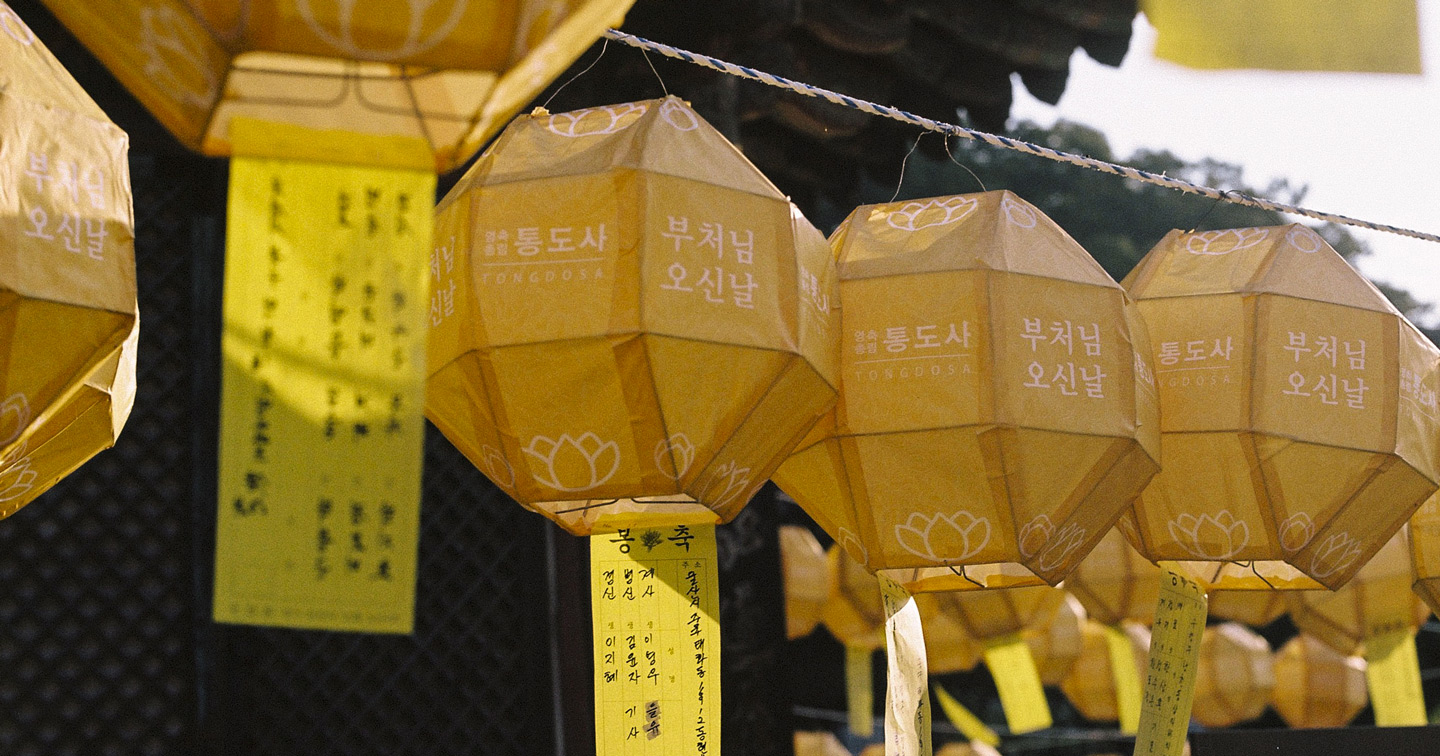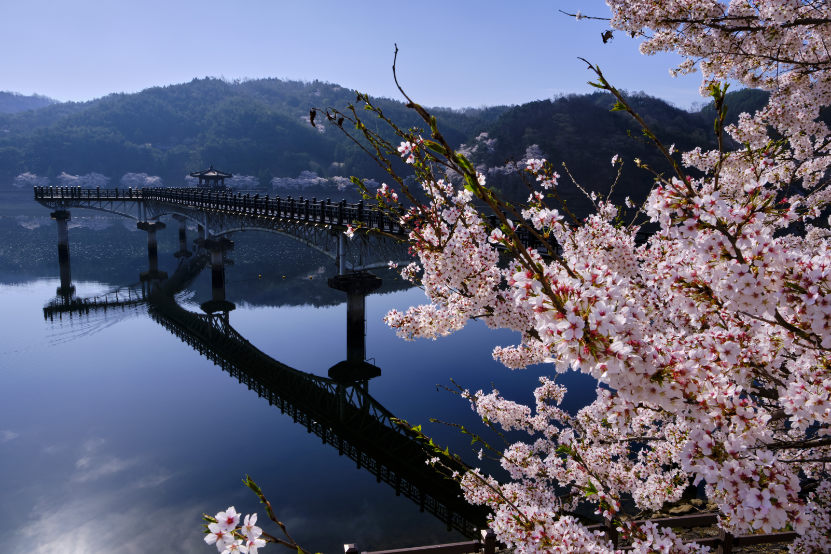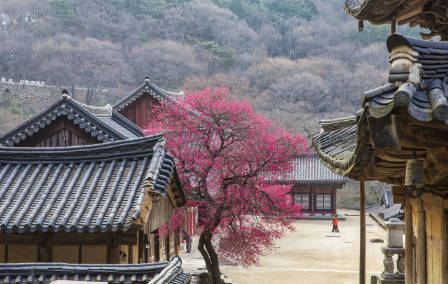Published 24th Jan. 2025
Reading time
Whether sampling street food in Busan or soaking up hanok café culture in Seoul, it's impossible to separate South Korea's inventive cuisine from its vibrant culture. Put simply, food is integral to South Korean identity. Full of colourful, umami-rich and (very) spicy creations, this country’s cuisine is hard to forget. But when delectable dishes dominate the foodie landscape at every turn, choosing dinner can be overwhelming. Need an introduction? Learn your bibimbap from your kimbap with our roundup of the best traditional food in South Korea…
1. Kimchi
2. Bibimbap
3. Tteokbokki
4. Kimbap
5. Bulgogi
6. Japchae
When it comes to traditional food in South Korea, no dish is more synonymous with the country’s cuisine than kimchi. Made from salted cabbage fermented with a blend of chilli, garlic, sugar, fish sauce and onion, kimchi’s origins date as far back as the Goguryeo Kingdom (37 BC – 668 AD). While its intense flavour might not appeal to all, its health benefits will; it’s nutrient-rich and has probiotic properties that boost gut health and the immune system. Whether for breakfast, lunch or dinner, kimchi is certain to make an appearance among banchan (Korean side dishes). Koreans’ dedication to this sour, salty and spicy staple is clear: many own special kimchi fridges that aid the fermentation process, a true labour of love. Traditionally, households would come together for kimjang – the collective process of making kimchi – in the autumn months to prepare and preserve large quantities for winter.
With a name that translates to ‘mixed rice’, bibimbap is pretty self-explanatory. That won’t stop us from giving it an introduction, however. Made from a combination of fluffy rice, sauteed vegetables, stir-fried meat (pork or beef), gochujang (Korean chilli paste) and a fried egg, it’s a concoction with cultural significance; bibimbap’s colourful makeup represents elements of Korean philosophy. The green, red, yellow, white and black ingredients are believed to represent wood, fire, earth, metal and water, as well as different points on a compass. While bibimbap may be well-balanced and nourishing, its true beauty lies in its versatility. There’s no strict ingredient list for this dish, which includes a range of (all delicious) regional and seasonal variations. This is Korean comfort food at its best.

Image by Olivier Romano
As we’ve discovered so far, food in South Korea has one thing in common: chilli. So, unsurprisingly, it’s one of the most important ingredients in tteokbokki, a popular street food dish of stir-fried rice cakes in a fiery gochujang-based sauce. Other ingredients in this soupy snack include fish cakes, cabbage, garlic and spring onions. Compared to the ancient origins of other South Korean staples (we’re looking at you, kimchi), the spice-centric tteokbokki of today is a relatively new addition to the foodie scene. In the 1950s, according to local lore, a woman making rice cakes in Seoul accidentally swapped soy sauce for gochujang and voila – she’d invented modern-day tteokbokki.
Next up is a seaweed roll sensation not unlike sushi: kimbap (also known as gimbap). These tasty snacks consist of cooked rice encasing a variety of fillings, including vegetables, meat, fish and egg, all wrapped up in a dried seaweed sheet. The long roll is then sliced up into bite-sized pieces and served with – you guessed it – kimchi. While it might look like its sushi sibling, there are key differences. Firstly, the rice inside a kimbap roll is cooked in sesame oil, not rice vinegar, and secondly, the fillings are cooked or preserved foods (not raw, like sushi fillings). From elevating children’s lunchboxes to perfecting a picnic in the park, kimbap is a go-to savoury snack.

Image by Olivier Romano
Bulgogi is one of South Korea’s most famous exports. Devoured in Korean barbeque restaurants around the world, bulgogi means ‘fire meat’. Consisting of thin slices of beef grilled to tender perfection, this versatile dish is traditionally served with a side of ssamjang (a thick, spicy dipping sauce). Bulgogi boasts a rich history to match its flavour, appearing in its earliest form during the Goguryeo Kingdom. So, what has made bulgogi so delicious through the centuries? It’s all in the marinade. This special (not-so-secret) sauce combines soy sauce, garlic, ginger, onion, sesame oil, sugar and Asian pear – the latter of which contains a crucial enzyme to tenderise the beef. These succulent slices typically sit atop a bed of steamed rice, served alongside an array of delicious banchan.
Last on our list of traditional food in South Korea is a stir-fried noodle dish called japchae. What makes these noodles stand out from the crowd? They’re bouncy beauties made from sweet potato starch, of course. Paired with a mix of vegetables (including mushrooms, carrots and radishes) and beef, the glass-like noodles are seasoned with sesame oil, soy sauce and sugar. Although the characteristically springy noodles were absent, a strictly vegetable japchae first emerged during the 17th century where it delighted members of the Joseon Dynasty. The modern-day iteration of japchae evolved during the 20th century, but its regal beginnings are still evident today: japchae is a dish reserved for special occasions and celebrations.

Image by Olivier Romano
Written by Hannah Whitehall | Header image by Cecile Rosenstrauch

Travelling with us means enjoying a trip that has been meticulously crafted by our team of experts, each knowing their specialised country like the back of their hand. Tailor-made with originality, quality and cultural immersion in mind, we can customise itineraries based on your taste, be that an architecture aficionado, a food fanatic or an environment enthusiast. Working hand-in-hand with local Concierges and guides, we’ll uncover spots perfect for you. From hidden gems to iconic landmarks, our curated experiences are supported by an array of additional services, including a 24-hour helpline and an app full of recommendations.
ENQUIRE NOWPractical advice and inspiration for your next trip

When you think of cherry blossom, we’d bet you picture Japan and its springtime Sakura. Now, we’re not denying that Sakura season is beautiful, but its reputation means it draws flocks of visitors, contributing to overtourism and disrupting local life. To combat this, we’re on a mission to shout about South Korea’s cherry blossom. Known locally as beotkkot, South Korea’s cherry trees bloom at a similar time to Japan’s and are just as breathtaking – without the pesky crowds (and skyrocketing costs).
20th October 2025 - South Korea The Natural World

Ditch the winter coats, grab your sunglasses and lace up your hiking boots for a holiday in spring in South Korea. With cherry blossom trees blooming across the country, verdant tea plantations ready for harvest and strawberry season well underway, spring is one of the most beautiful times to explore the country. Whether you want to walk on water at the Jindo Sea-Parting Festival or learn about the historical treasures at Gyeongju National Park,
22nd January 2025 - South Korea Travel Inspiration

When it comes to romance, Greece’s islands set the bar high. From Paros’ sun-kissed beaches and Folegandros’ blush-pink blooms to Sifnos’ culinary delights and Hydra’s slow-paced streets, each island radiates beauty. Whether you fall in love with the sunset in Santorini or the atmosphere in Apollonia, the perfect spot awaits. Read on to discover the most romantic islands in Greece... Paros Folegandros Sifnos Hydra Santorini Paros Best for:
27th October 2025 - Greece Travel Inspiration

Our team of destination experts will get to know you and your unique requirements for your holiday

We work with you to build an ultra-personalised holiday itinerary with your choice of accommodation, experiences and activities

All of our holidays include little extras designed to make a big difference to your trip, from fast-tracking you through airport check-in and security to our network of local Concierges